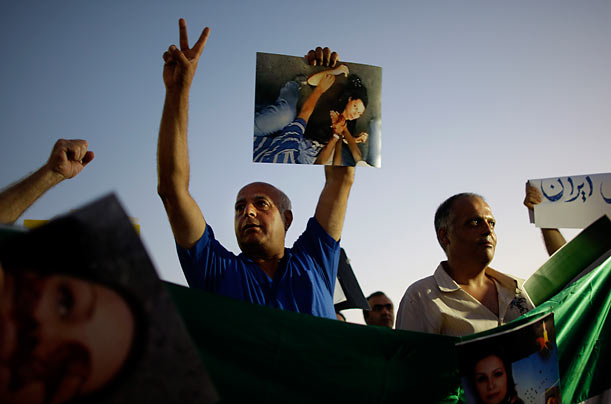
Her eyes search out the camera, begging to tell a story, but it is too late: she is dying as we watch. The videotaped killing of Neda Agha-Soltan, pierced through the heart by the bullet of an unknown assailant as she watched a demonstration in Tehran, is forbidden viewing in Iran. But for the world, it has become the defining image of the protests that followed her country's widely discounted presidential election. From Berlin to Los Angeles to the Iranian expatriate community of Tel Aviv (above), the image of her bloodied face has been carried aloft by outraged protesters.
As an icon of rebellion, however, Neda is different from her predecessors. The man who stopped the tanks in Beijing stood alone and anonymous; we do not know his name or his fate. Neda is dead, but her life story is still being pulled together — elaborated and embellished, blog post by blog post, tweet by tweet.
As soon as the 40-second video of her death hit the Internet, Neda, even though she was just a bystander, became the embodiment of the leading role Iranian women have played in the protests. Early mourners scoured the Web and appropriated the image of the wrong woman — another Neda, who, it turned out, was very much alive. When the world learned that her name meant voice in Farsi, she became a symbolic victim of oppression, silenced by a brutal regime. As each detail of her life emerged, it was given import and meaning. The government, which quickly declared the video a fabrication, has won back control of the streets, but it has no power over mythmaking. Neda died on the Web, and she is being given a second, perhaps eternal, life on it.
Nor is Neda's the only metamorphosis to emerge from Iran. Tehran's nights have been echoing with the protest chant "Allahu akbar, Allahu akbar" (God is great, God is great). The Palestinian-American poet Remi Kanazi remarked that those words would once have struck fear into the hearts of most Americans. That they are now a global inspiration is a revolution all by itself.